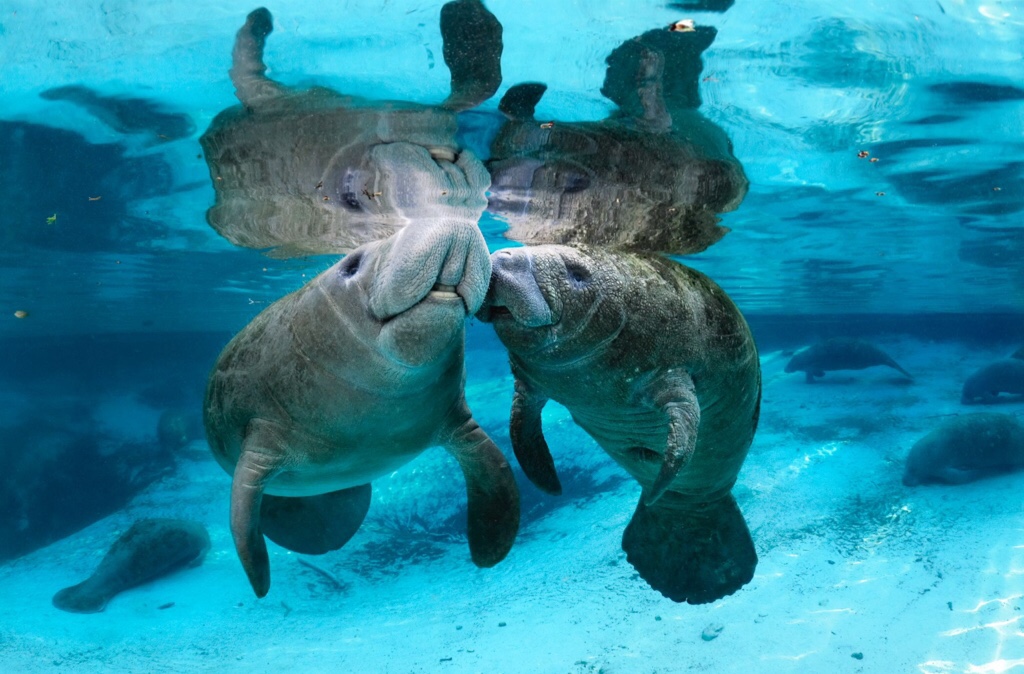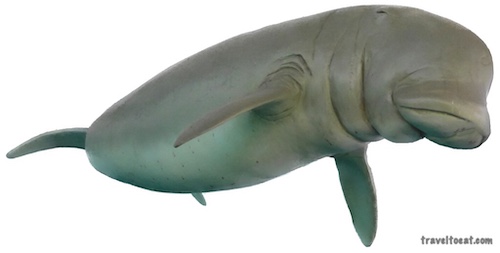
When we were at the Sydney Aquarium we had a chance to see one of their star attractions, the dugong. Sirenia (commonly referred to as sea cows) are an order of aquatic, herbivorous mammals that inhabit swamps, rivers, estuaries, marine wetlands, and coastal marine waters. Four species are living, in two families and genera. These are the dugong (one species, Dugong dugong) and manatees (three species; Amazonian manatee (Trichechus inunguis), West Indian manatee (Trichechus manatus), and West African manatee (Trichechus senegalensis)). Sirenia, commonly sirenians, are also referred to by the common name sirens, deriving from the sirens of Greek mythology. This comes from a legend about their discovery, involving lonely sailors mistaking them for mermaids. “Sea cow” (seekoei) is also the name for a hippopotamus in Afrikaans. In Germanic languages, the word Sea can mean either a body of fresh or salt water, so this follows from the hippopotamus inhabiting lakes in southern Africa rather than the sea itself. Australia is home to the largest population of dugongs, stretching from Shark Bay in Western Australia to Moreton Bay in Queensland. The population of Shark Bay is thought to be stable with over 10,000 dugongs.
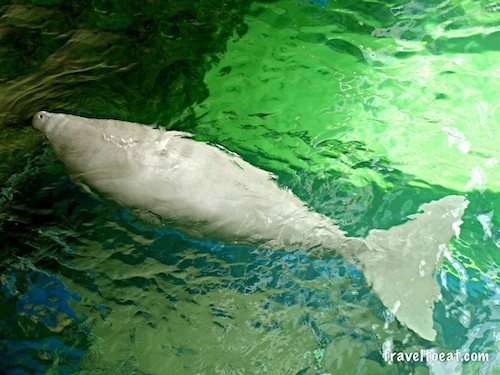
Like dolphins and whales, dugong must come to the surface to breathe as the one pictured above is doing.
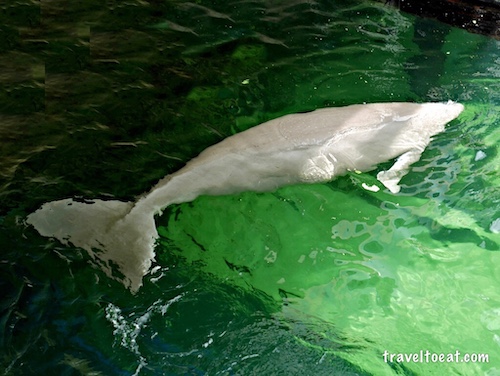
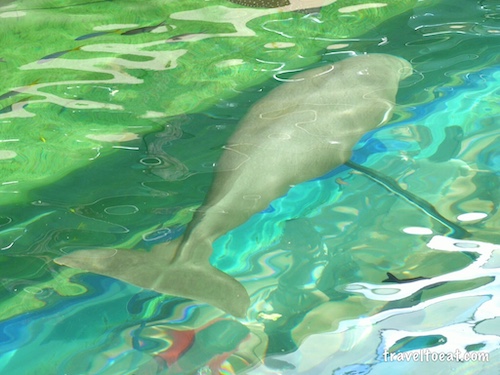
The dugong’s tail flukes and flippers are similar to those of dolphins. The tail flukes are raised up and down in long strokes to move the animal forward, and can be twisted to turn. The forelimbs are paddle-like flippers which aid in turning and slowing.
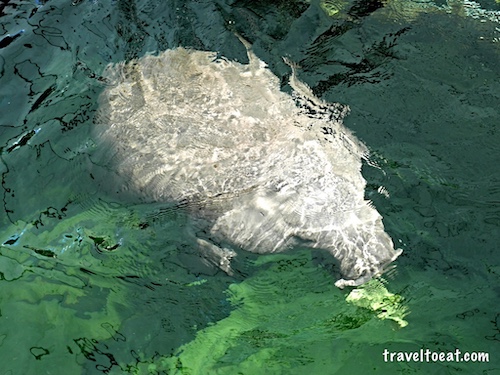
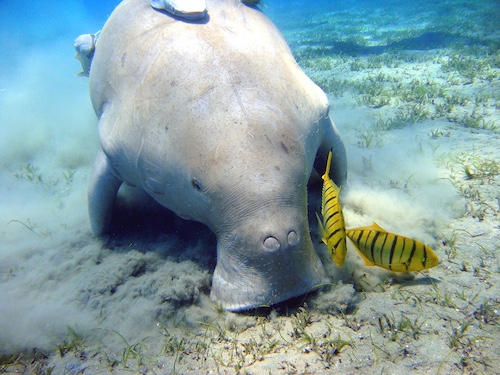
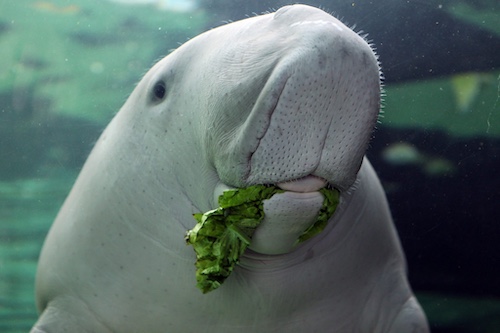
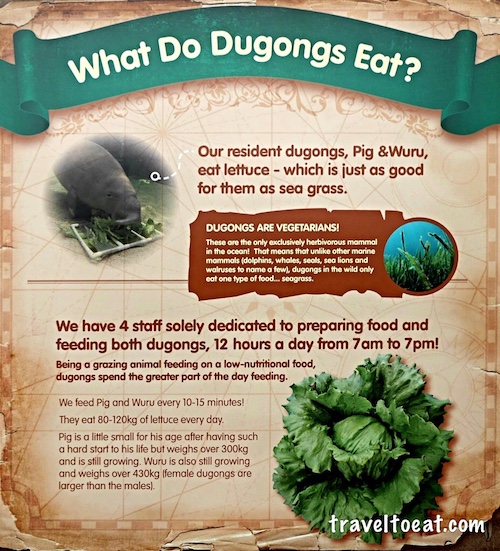
Dugongs are truly “cows of the sea” as they only eat vegetables. Its snout is sharply downturned, an adaptation for feeding in seagrass communities. The molar teeth are simple and peg-like unlike the more elaborate molar dentition of manatees. As you can see from the above plaque, they are the only ocean mammals that are exclusively vegetarian. While they eat sea grass in the wild, at the Sydney Aquarium they are fed lettuce, every 10-15 minutes! The two dugongs consume 80-120 kg (176-265 lbs) of lettuce a day. They have four staff solely dedicated to preparing and feeding both dugongs 12 hours a day. An adult’s length rarely exceeds 3 meters (9.8 ft) and is expected to weigh around 420 kilograms (926 lb). Weight in adults is typically more than 250 kilograms (551 lb) and less than 900 kilograms (1,984 lb). Females tend to be larger than males. At the Sydney Aquarium the dugongs are still growing, the female Wuru weighs 430 kg (948 lbs) and the male Pig weighs 300 kg (661 kg).
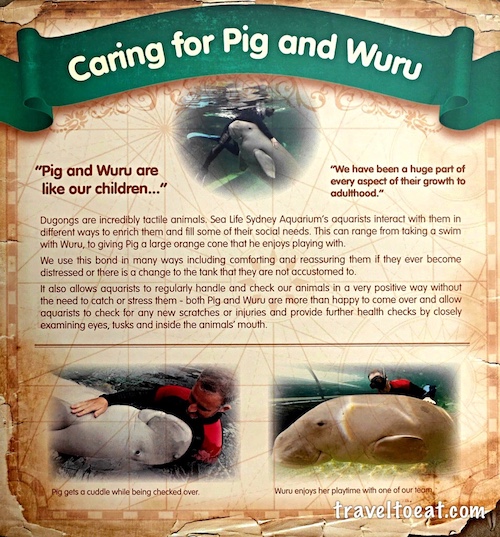
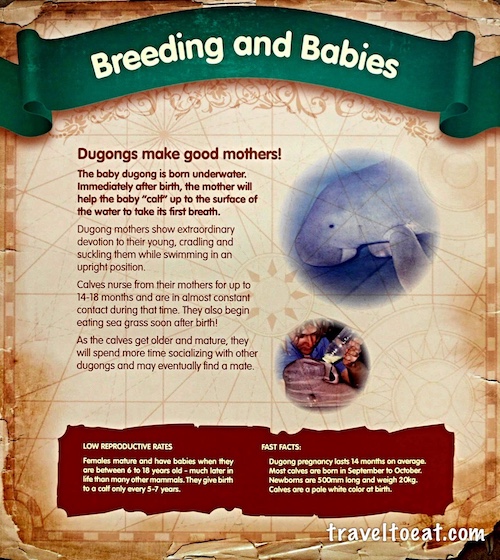
Dugongs, like the manatees, have a low reproductive rate, giving birth only every 5-7 years. The dugong pregnancy lasts 14 months and the calves nurse from their mothers for up to 14-18 months. The dugong has been hunted for thousands of years for its meat and oil. Traditional hunting still has great cultural significance in several countries in its modern range, particularly northern Australia and the Pacific Islands. Despite being legally protected in many countries, the main causes of population decline are related to humans in their environment and include fishing-related fatalities, habitat degradtion and hunting. With its long lifespan of 70 years or more, and slow rate of reproduction, the dugong is especially vulnerable to extinction. In 2013 a record 830 manatees died in Florida while in 2015, 230 have died to date.
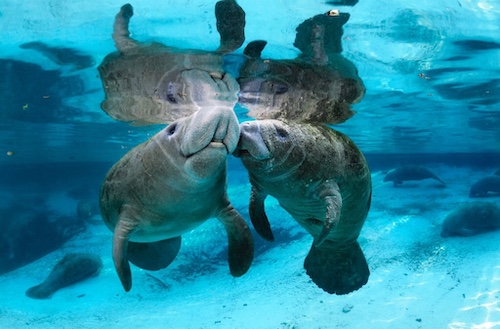
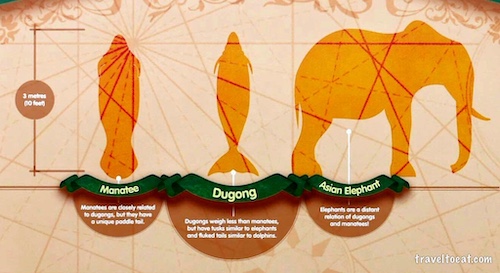
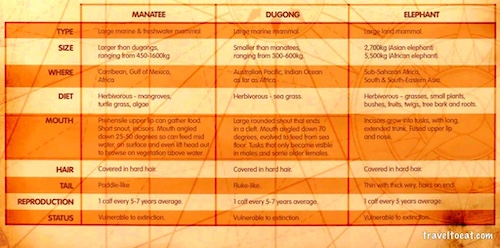
The Dugong is a relative of the fresh water mammal, the Manatee but with two significant differences. The main difference is their habitat. The Dugong is a marine mammal which means it only lives in salt water seas and oceans while manatees can live in fresh water. The other main difference is the shape of their tails. The manatee has a round paddle shaped tail while the Dugong has a tail that resembles a dolphin’s tail. Dugongs and other sirenians are not closely related to other marine mammals, being genetically more related to elephants. Dugongs weigh less than manatees and as I have already mentioned, manatees have rounded tails.
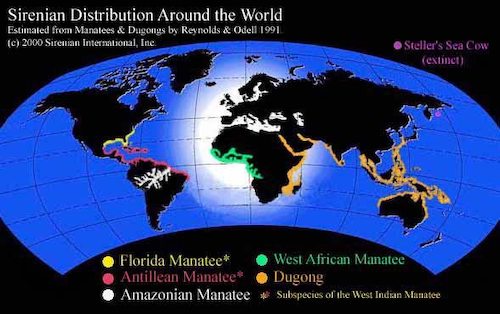
Populations of dugongs exist in the water of 37 countries and territories. In the late 1960s, herds of up to 500 dugongs were observed off the coast of East Africa and nearby islands. Current populations in this area are extremely small, numbering 50 and below, and it is thought likely they will become extinct. Local and international laws protect the only four living species, but manatee and dugong populations are fragmented, threatened, and/or endangered everywhere they exist. They are vulnerable to extinction because of habitat loss and other negative impacts related to human population growth and coastal development. Australia has established a commision (GBRMPA) to monitor numbers and establish preservation of seagrass habitat. Throughout the Great Barrier Reef Marine Park, commercial net fishing has been prohibited or restricted, and a series of Dugong Protection Areas have been established. Starting in the 18th century when the English declared Florida a manatee sanctuary and made manatee hunting illegal, people have worked to protect this species. In 1972, the manatee was designated a marine mammal protected under the Federal Marine Mammal Protection Act. Florida has implemented conservation methods, refuge zones and speed controls for boating.
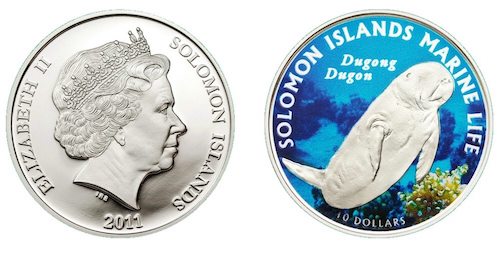
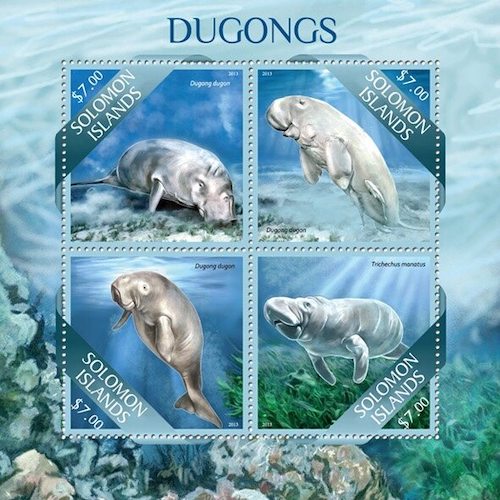
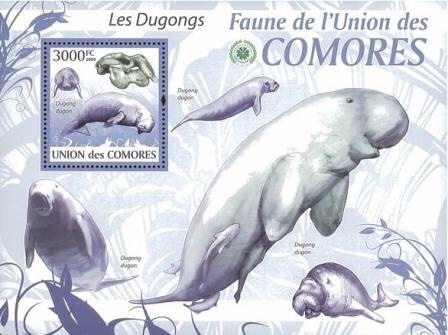
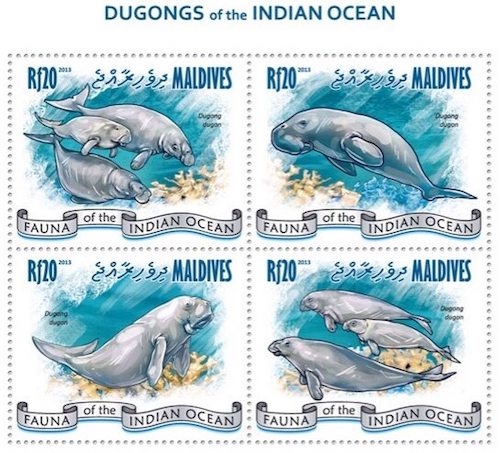
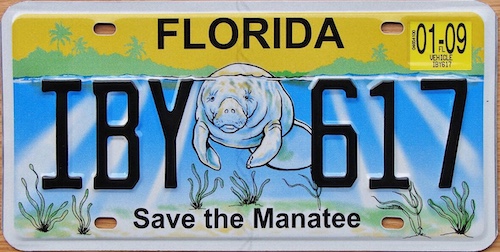
To fund conservation organizations and public conservation programs, and to raise public awareness, the sale of stamps and coins devoted to the dugong and manatee have been effective. One of the most popular efforts to raise money for manatee research and conservation is the sale of license plates by the Florida Fish and Wildlife Conservation Commission. Manatee Appreciation Day is celebrated on the last Wednesday of March in the United States and Florida celebrates Manatee Awareness Month during November. The exhibition of dugongs and manatees also is very effective in raising awareness, including this exhibition at the Sydney Aquarium. SeaWorld of Florida has played a major role in the efforts to protect and conserve the manatees. As always, I hope you enjoyed the dugongs and please leave a comment.
[mappress mapid=”106″]
References:
Fossil Evidence of Sirenia: http://www.savethemanatee.org/news_feature_sirenian_fossil_13.html
Save the Manatee: http://www.savethemanatee.org/default.html
Palawan Mermaids: https://uscdiving.wordpress.com/2012/05/15/palauan-mermaids/
All the Creatures: http://allthecreatures.org/animals/dugong-cow-sea.html
Fuzzfeed Manatee: https://fuzfeed.com/manatee-appreciation-day-know-your-facts/
Record Number of Manatee Deaths: http://www.huffingtonpost.com/2013/10/30/manatee-deaths-florida_n_4178771.html
Manatee Motality in Florida: http://m.myfwc.com/research/manatee/rescue-mortality-response/mortality-statistics/
Sirenian Distribution: http://www.sirenian.org/distribution.html
Australian Dugong Commision: http://www.environment.gov.au/cgi-bin/sprat/public/publicspecies.pl?taxon_id=28

